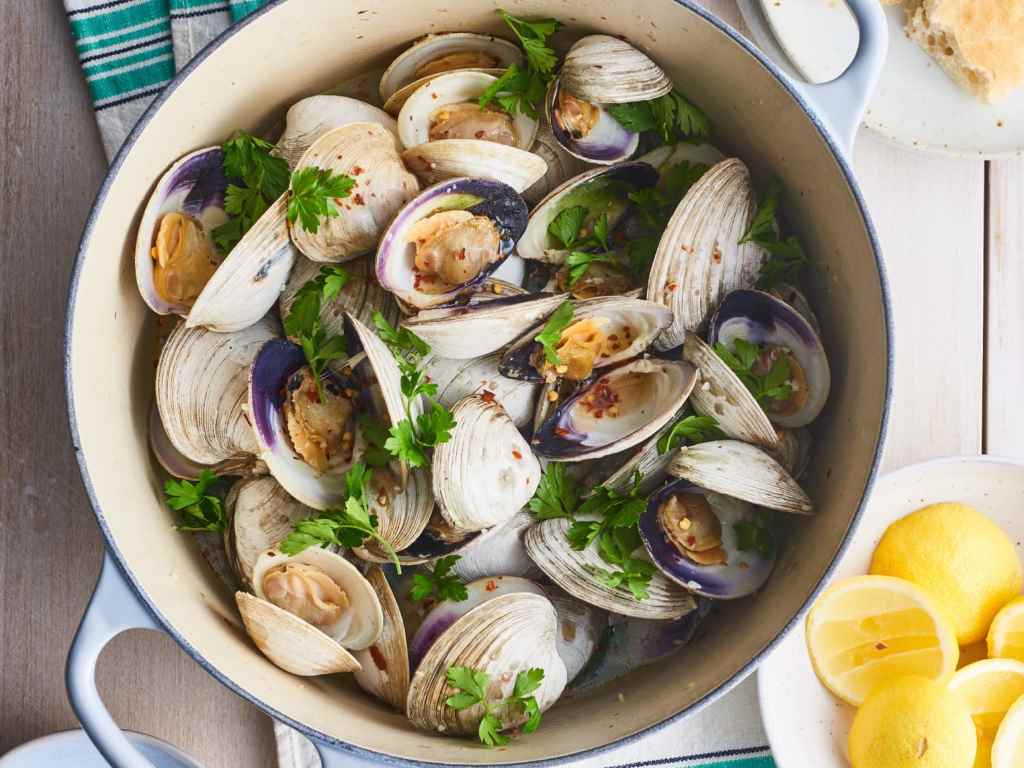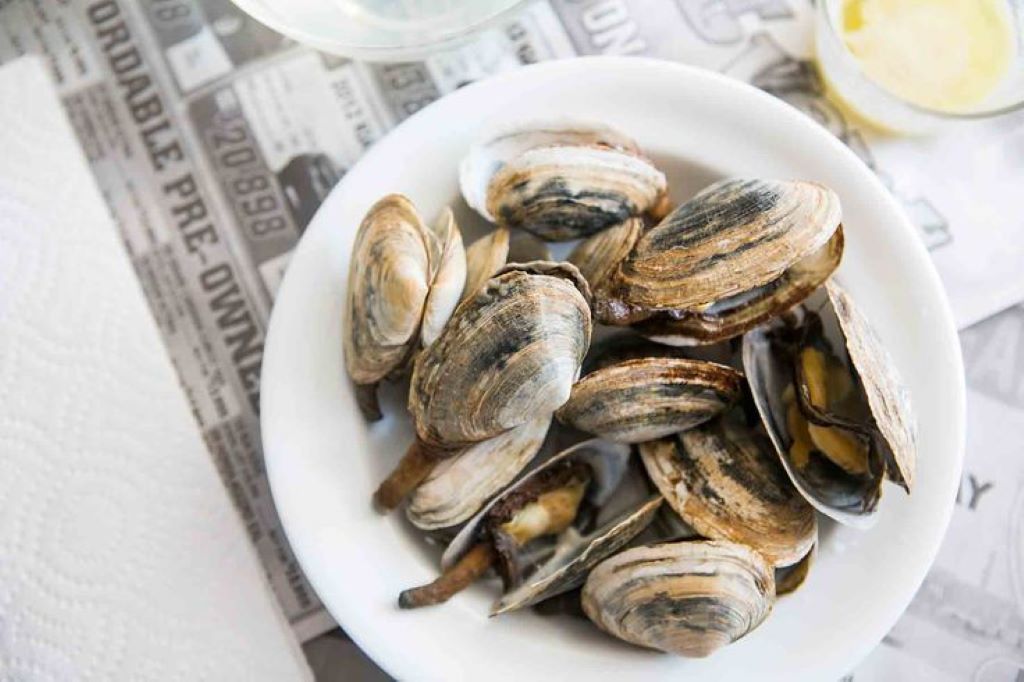
01 Jul A Comprehensive Guide to Cooking Frozen Clams in Shell
Frozen clams in the shell provide a convenient and delicious way to enjoy these delectable seafood treasures. Whether you’re a seasoned seafood enthusiast or a curious novice, this comprehensive guide will walk you through the steps of preparing and cooking frozen clams in the shell, ensuring a flavorful and satisfying dining experience.
Understanding Frozen Clams in Shell
Frozen clams in the shell are typically harvested at their peak freshness and then quickly frozen to preserve their flavor and texture. This process ensures that you can enjoy the taste of the sea throughout the year, even when fresh clams might not be readily available. Before we delve into the cooking methods, it’s essential to understand the different types of clams you might encounter. Additionally, if you try Mexican Lasagna, you’ll find it offers a unique twist on traditional Italian flavors, blending spicy Mexican seasonings with classic lasagna ingredients.

Types of Clams
- Hard-shell clams: These clams, such as quahogs and littlenecks, have thick shells and are often used in chowders, stews, and pasta dishes.
- Soft-shell clams: Also known as steamers or Ipswich clams, these clams have thinner, more brittle shells and are popular for steaming or frying.
- Razor clams: With their long, narrow shells, razor clams have a distinct flavor and are often grilled or sauteed.
Preparing Frozen Clams
The first step in cooking frozen clams is thawing them. This can be done in several ways:
- Refrigerator thawing: Place the clams in a bowl or colander in the refrigerator overnight. This is the gentlest thawing method and helps preserve the clams’ texture.
- Cold water thawing: Submerge the clams in a bowl of cold water for about 30 minutes, changing the water every 10 minutes. This is a quicker method, but ensure the clams are fully thawed before cooking.
- Quick thawing (not recommended): Thawing clams in the microwave or hot water is not recommended as it can affect their texture and flavor.
Once thawed, it’s important to clean the clams thoroughly. Scrub the shells under cold running water to remove any dirt or debris. Discard any clams that have broken or open shells, as this indicates they are not fresh.
Cooking Methods
Now that your clams are prepped and ready, let’s explore the various cooking methods you can employ:
- Steaming: Steaming is the most popular and arguably the simplest way to cook clams in the shell.
- Place the clams in a steamer basket or a pot with a small amount of water (about an inch).
- Cover the pot and bring the water to a boil.
- Steam the clams for 5-7 minutes, or until the shells open.
- Discard any clams that do not open.
- Serve the clams with the steaming liquid, melted butter, lemon wedges, and your favorite herbs and spices.
- Boiling: Boiling is similar to steaming but involves fully submerging the clams in liquid.
- In a large pot, combine water, white wine, garlic, herbs, and spices.
- Bring the liquid to a boil and add the clams.
- Cook for 5-7 minutes, or until the shells open.
- Discard any unopened clams.
- Serve with crusty bread to soak up the flavorful broth.
- Grilling: Grilling imparts a smoky flavor to the clams and is a great option for outdoor cooking.
- Preheat your grill to medium-high heat.
- Place the clams directly on the grill grates.
- Grill for 3-5 minutes per side, or until the shells open.
- Serve with melted butter, garlic, and herbs.
- Baking: Baking clams is a less common method, but it can yield delicious results.
- Preheat your oven to 400°F (200°C).
- Place the clams in a baking dish with a small amount of liquid (white wine, broth, or water).
- Bake for 10-15 minutes, or until the shells open.
- Serve with a drizzle of olive oil and fresh herbs.
Tips and Tricks
- Don’t overcook: Clams cook quickly, so keep a close eye on them to avoid overcooking, which can make them rubbery.
- Add flavor: Experiment with different liquids and seasonings to enhance the flavor of your clams.
- Serve with accompaniments: Clams pair well with crusty bread, pasta, rice, or vegetables.
- Don’t be afraid to experiment: Try different cooking methods and recipes to find your favorites.
Frozen Clam Recipes
To inspire your culinary adventures, here are a few delicious recipes you can try with frozen clams in the shell:
- Classic Steamed Clams: This simple recipe highlights the natural sweetness of clams.
- Linguine with White Clam Sauce: A classic Italian pasta dish featuring clams in a flavorful garlic and white wine sauce.
- New England Clam Chowder: A hearty and comforting soup made with clams, potatoes, and cream.
- Clams Casino: A popular appetizer featuring clams topped with breadcrumbs, bacon, and peppers.
- Grilled Clams with Garlic Butter: A simple yet delicious recipe perfect for summertime grilling.
With this comprehensive guide and a dash of creativity, you’ll be well-equipped to transform frozen clams into culinary masterpieces. Whether you’re enjoying them as a light snack, a hearty meal, or a special occasion treat, these delectable bivalves are sure to tantalize your taste buds and leave you craving more.
Additional Tips:
- If you’re using frozen clams in a recipe that calls for fresh clams, you may need to adjust the cooking time slightly. Frozen clams might take a little longer to cook than fresh clams.
- When steaming or boiling clams, be careful not to overcrowd the pot. This can prevent the clams from cooking evenly.
- If you’re unsure whether a clam is cooked, gently pry open the shell. If the clam is cooked, it will be opaque and firm to the touch.
- Discard any clams that do not open during cooking, as this indicates they are not fresh.
By following these tips and experimenting with different recipes, you’ll be able to enjoy the delicious flavor of frozen clams in the shell all year round.

Sorry, the comment form is closed at this time.